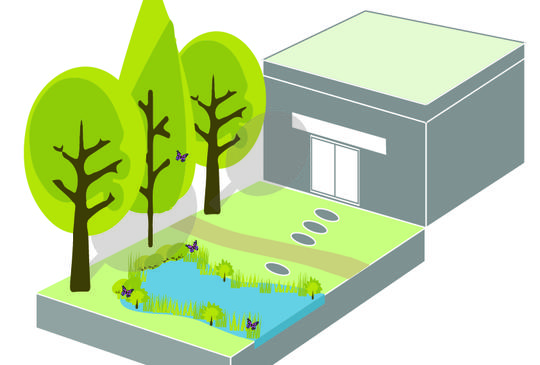
Getting the Green Light – How Do Nature-Based Solutions Perform?
Contributed by Sam Hartley
The benefits that nature brings us are widely recognised but rarely assessed in detail. When we ‘green’ our communities and workplaces, we don’t always understand and capitalise on the vast range of benefits this greening could bring beyond it being easier on the eye.
Gaining a greater understanding of what nature-based solutions (NBS) can do for us will lead to making smarter choices on installations, and even highlight where financial savings or increase in value can be achieved.
The IGNITION project aims to develop innovative financing solutions for investment in Greater Manchester’s natural environment. The development of these financing solutions involves in-depth research around the benefits nature bring to so many people and businesses.

Creating an Evidence Base
As part of the project a NBS Evidence Base has been produced that collates more than 1,000 existing evidence items over 12 different environmental, social, and economic benefits. To help build the enabling environment for investment in nature-based solutions, the project has now made the databases available on ignitiongm.com, alongside supporting documents and a webinar that describe how to use the data, the methodology for collation, and a headline summary report.
The NBS included in this evidence base are:
- green walls
- green roofs
- sustainable drainage systems (SuDS)
- urban parks and green spaces
- street trees
The research looked at:
- air quality
- water quality and quantity
- carbon storage and sequestration
- health and well-being
- noise
- biodiversity
- temperature and energy use
- land and property prices
- local economic growth
- amenity
This evidence base will continue to grow as more research is done throughout the IGNITION project and will become a live repository of information, linking to the live monitoring of the NBS at the University of Salford Living Lab.
Using the IGNITION NBS evidence base
Aside from building funding models for Greater Manchester’s natural environment as part of the IGNITION project, the nature-based solutions evidence base has huge potential to support work around NBS in other organisations and projects.
By harnessing the vast range of existing evidence brought together in the databases, estimations can be made on NBS performance. A few examples of how this can be done are:
-
Calculate benefits at scale
- Organisations create wider understandings of their impact - for instance - "If we plant X trees as part of our Net zero strategy they could soak up Xkg of carbon per year (on average 5.5kg of carbon per year per tree). Those trees could also soak up on average 43% rainfall and cool the underlying air by 3°C."
- Prioritising green space in property developments could increase property value by on average 9.5%, or £X per property. Additionally, increased green space can reduce property crime by, on average, 48%.
- Support installation proposals, business cases and funding bids
- Installing a green roof, provides added insulation that could reduce energy bills by an average of 6.7% and extend the life of the roof by 23 years, while providing an attractive space for recreation or commercial activities and improves building users access to nature.
- Installing street trees in central business districts could increase consumer willingness to pay by 10-50%, alongside a 30-50% increase in restaurant patronage.
- Calculate the impact/benefit on specific communities
- In areas of high vehicle pollution, hedges and green screens can be used to protect pedestrians from inhaling 24-61% of pollutants.
- Supporting areas with high provisions of mental health treatment, through increasing access to green space that can help to reduce prevalence of anxiety and depression. Green spaces are a key pillar of social prescribing.
- Harness SuDS in areas of recurring flooding that can reduce runoff by 40-70% depending on the system
- Communications and engagement
- Create engaging content and infographics that are supported by evidence
- Extract data from relevant areas to build engagement relevant to your target audience, for instance if you’ve engaging developers or businesses, focus on the land and property value and local economic growth benefit evidence
- Engage employees through highlighting the evidence for utilising green spaces or greening workplaces due to the impact on reduced sick leave, stress and memory recall
This is just a taster of how this wealth of data can be used. If you do plan to use the databases, through these methods or others, do let us know by emailing pmo.ignition@manchesterfire.gov.uk.
The webinar showing ‘How to use the IGNITION nature-based solutions evidence base’ is available to view here. You can also find a user guide, methodology document and headline findings report alongside the databases on ignitiongm.com

Contributor Profile
Sam Hartley is Campaign Officer for the Business in the Community Environment team, working full time of the IGNITION Project. She joined the project in October 2019, moving from working on environmental projects in Scotland. Along with GMCA, Sam has led on the research for the nature-based solutions Evidence Base for the IGNITION project.




